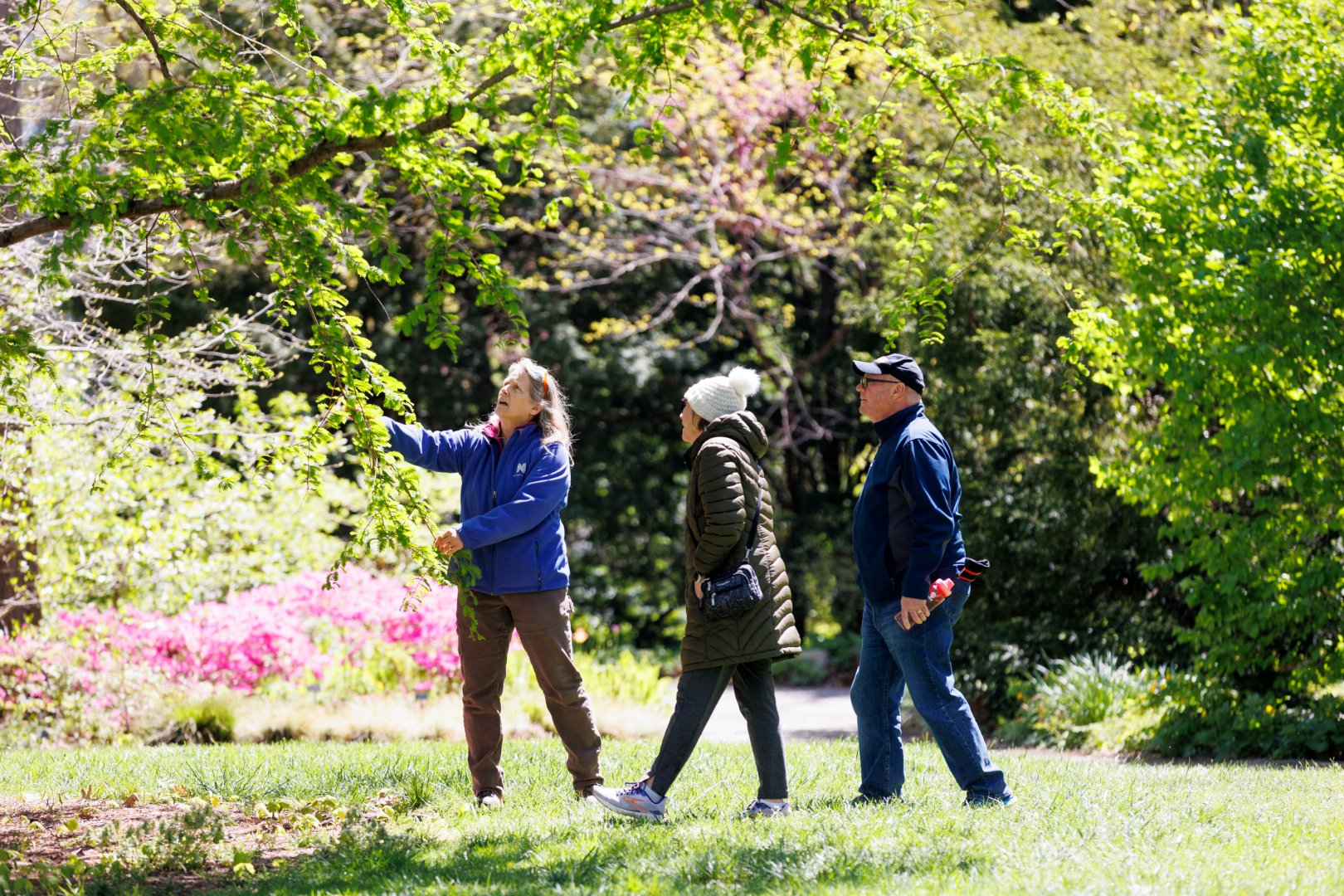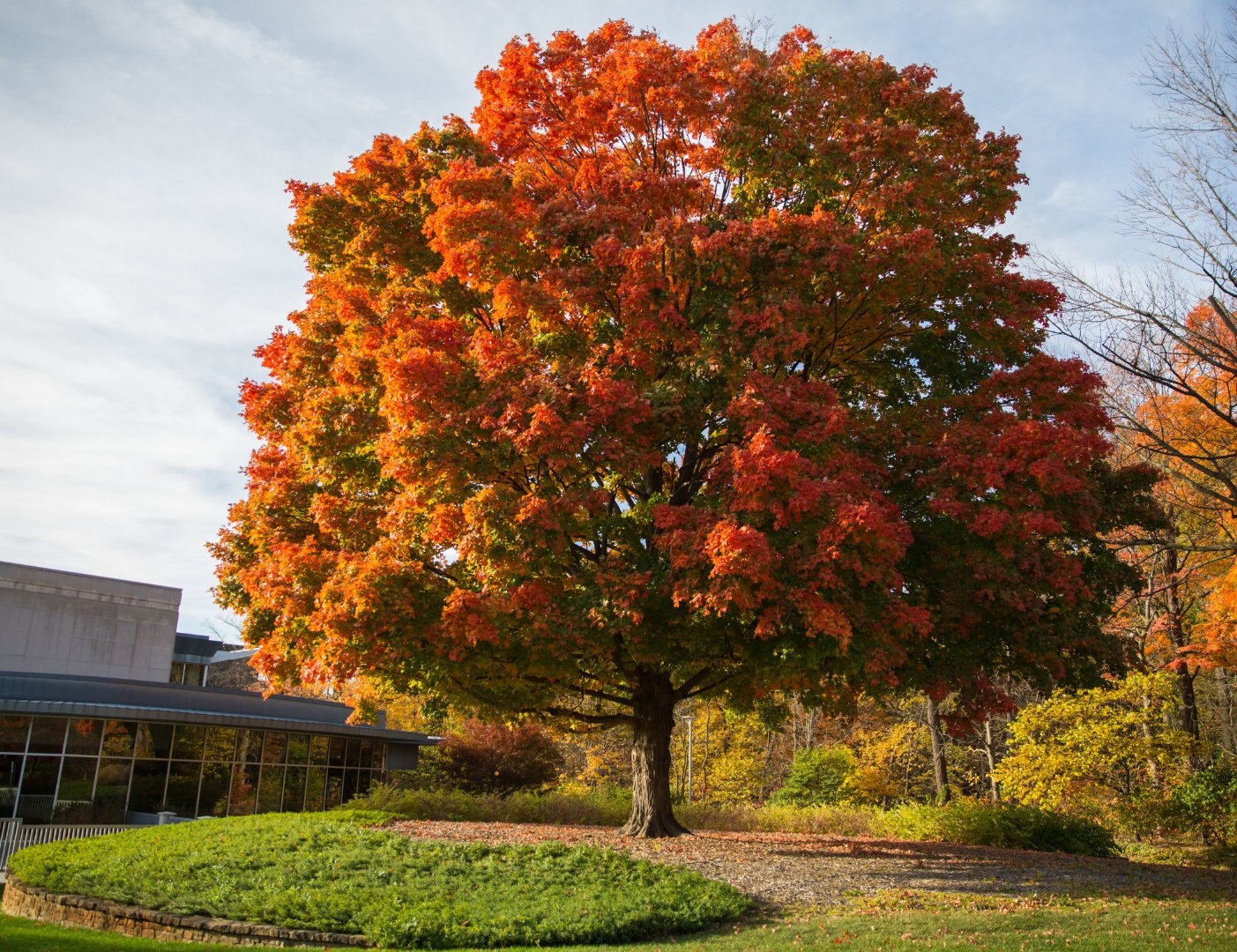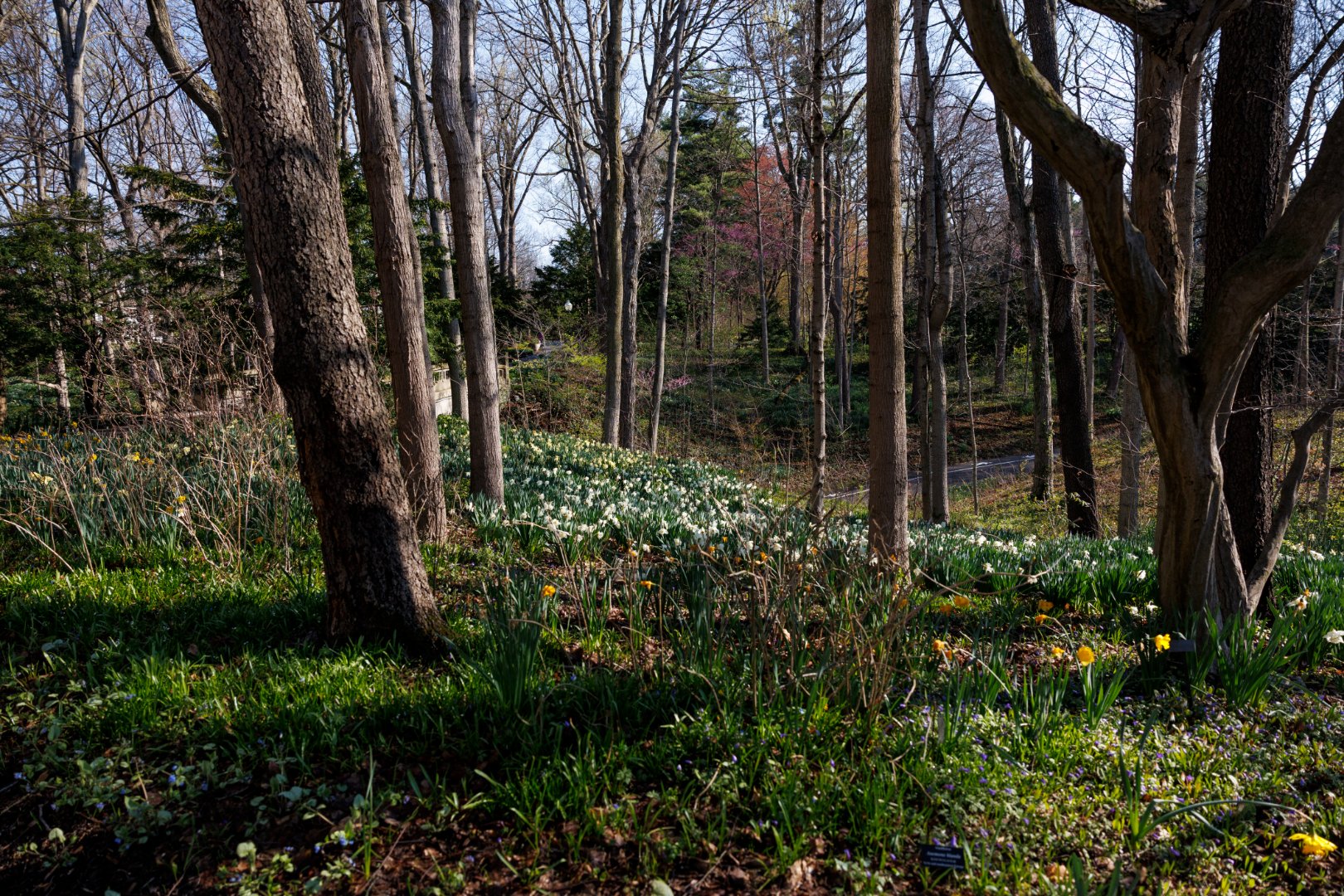Caring for the Canopy at Newfields
I love driving into Newfields every day and being greeted by our large, mature trees. My blood pressure drops, and the worries of the road disappear. A century ago, people cared enough to plant these trees, and they have been cared for ever since. We call them Heritage Trees, which means they are original to the Oldfields Estate and now, it is our duty and privilege to care for them.
Many things affect the health of trees including soil, water, weather, insects, diseases, and people. In celebration of Arbor Month, I’m going to share just a few things we do to keep our trees happy and healthy.

Katie Booth talks to guests about a dawn redwood in The Garden in spring of 2024.
Trees are an important part of our living collection, and their care is considered in projects big and small. One significant example that still comes to mind is from way back in 2005. The roots for the large sugar maple that is now known as the Finale Tree for Winterlights were at risk of being damaged in the construction process, but we were able to create a retaining wall to separate the garage from the critical roots by driving large steel sheets into the ground between the two. The stone wall around part of the tree marks the edge of the sheet pile shoring.
As you stroll around The Garden you may notice some new plantings around the base of a few trees. Foot traffic, lawn mowers, and heavier machinery all compact the soil and risk damaging the tree’s roots, the majority of which are within the top 6 to 18 inches of soil. To prevent this, we “fluff up” the first foot of soil with an air-powered soil excavation tool, then top dress it with a layer of compost, and plant through it. This helps keep people and machines off the sensitive roots and is helpful for our old friends.

Sugar maple at Newfields.
Not as noticeable, but equally important, is lightning protection. Many of the taller trees at Newfields have a copper tip installed at the top that is connected to a cable that stretches into a grounding rod that is buried in the ground. If the tree is struck by lightning, voltage shoots through the wire instead of the tree. This is an important protection for some of our largest trees, especially this time of year. We adjust them every year or two as the trees grow.
Treating the trees for tiny pests and disease is a constant in The Garden. One you may have heard of before is the Emerald ash borer, an invasive pest that was discovered in the United States in 2002 and we detected it our trees in 2013. Fortunately, we were prepared to treat our trees as Newfields hosted a workshop in 2009 to help arborists learn how to help prevent infestations in individual trees. To this day, we are still protecting a dozen of these special trees throughout The Garden. Without treatment, they would not survive, like so many ash trees throughout the country.

There are other pests and diseases we are watching out for, including the relative newcomer, Beech Leaf Disease. It is thought to be caused by a foliar nematode (a tiny, tiny little thing) that feeds inside the leaf buds and will eventually kill the tree. One of the signature trees on campus is a Copper beech, a cultivated form of Fagus sylvatica, and we are doing our best to keep our beech trees healthy to help them ward off disease.
One thing about living things is that they don’t live forever. It is our job to care for the trees in our living collection, especially these Heritage Trees, and keep them healthy for as long as possible, and with an eye to the future, continue to plant young trees that will grow up to last for future generations to enjoy.
To celebrate Arbor Month, I hope you will take a walk around The Garden to admire our beautiful canopy of trees, and if you are able, consider donating to our Tree Fund to help support the care of our Heritage Trees.




